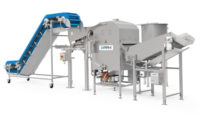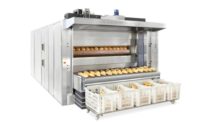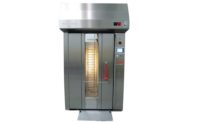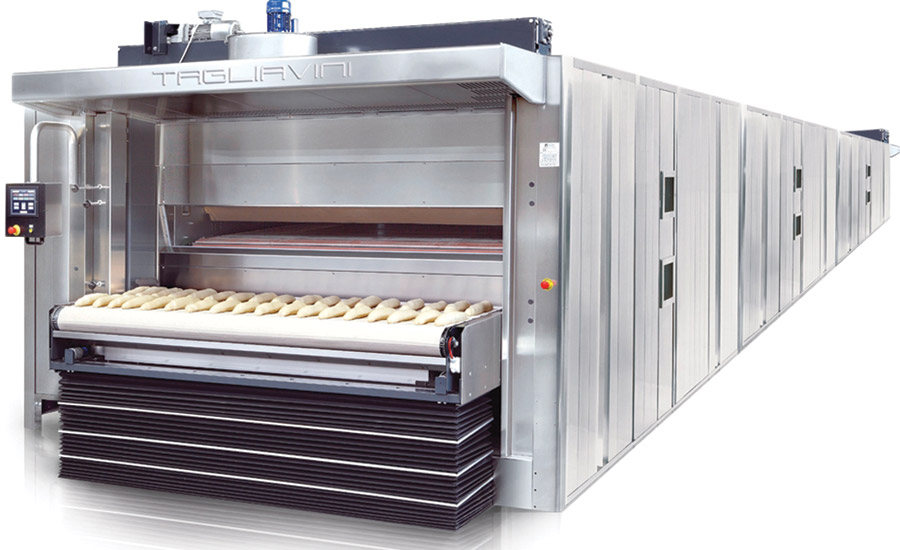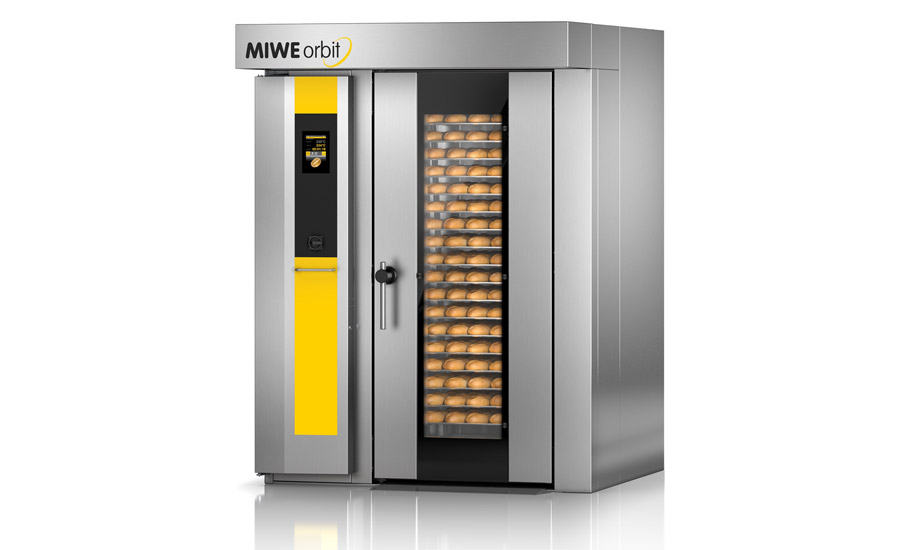Oven, proofer customers seek connectivity, capacity, energy efficiency
Customers search for wider ovens, more energy efficiency










When it comes to equipment like ovens and proofers, internet connectivity, wider and larger machines, artisanal production methods, shorter bake times, reversible belts, energy efficiency and improved cleaning and sanitation are all top considerations in today’s market.
Views from the field
The Fred D. Pfening Company, Columbus, OH, has been getting more involved in ensuring that its proofers are appropriately sized for customers, says Brian Doan, project engineer. “I’ve seen a lot of people who have problems with the proof box because the box is undersized. They’re trying to put more product through than they’re capable of actually proofing. It’s important to us that we check those and get those specs before we sell somebody a proofer.”
Franz Haas Machinery of America, Williamsville, NY—part of Bühler Group—has been hearing from customers who want increasingly wider ovens. “Footprint is an issue,” says Kevin Knott, key account manager. “Everybody wants more capacity.” This can mean ovens as wide as 4.7 meters, up from 2.5 meters.
And they’re asking for shorter bake times, along with greater energy efficiency, Knott says. “Energy efficiency is not as big in North America as it is in Europe, but it’s getting there,” he says. “Customers are starting to talk about it now.”
WP Bakery Group USA, Shelton, CT, also has seen an increased focus on energy efficiency, according to Patrick Nagel, key account sales manager. In addition, they want equipment to fulfill new sanitation requirements, and equipment to be designed for reduced cleaning times, he says.
Erika Record Baking Equipment, Clifton, NJ, keeps hearing from customers who want to move from batch to continuous baking, a process that is eased greatly by a reversible belt, says Cindy Chananie, commercial business development. “If the production load is large, you can run the belt continuously like a tunnel oven. If products warrant smaller-batch baking, the reversible belt allows the operator to discharge fully baked product out of the back of the oven, and then reverse the belt to continue to bake a different product.”
Customers of MIWE America, Hillsborough Township, NJ, want connectivity, says Harry Jacoby, sales director. “Customers want to be able to go online and communicate with their equipment, and for their equipment to be able to communicate with them. When there’s a problem, the system should be able to notify management what’s going on, what problems there are, and what needs to be done to connect it.”
More bakers also want to work with vendors that provide one-stop shopping, Jacoby says. “They would rather not piecemeal, when they’re putting in a line. We’ve moved in that direction, because customers wanted us to be able to provide the solution for the hot and cold parts of the line.”
AMF Bakery Systems, Richmond, VA, is increasingly seeing customers interested in artisanal production methods, including greater product variety and higher-quality bread, says Dennis Kauffman, executive product manager, baking systems. “We see artisanal bread portrayed as a ‘healthier’ alternative to traditional sliced white bread.” They’re also seeking more textures and flavors, he says.
Reading Bakery Systems, Robesonia, PA, has seen a surge in interest for wavy oven bands used to make multi-crisp products, says Samuel Pallottini, director of equipment sales for cookies, crackers and pet food. “The first time you bite it, it tastes like a cracker. The next time, it tastes like a chip,” he says. “Customers are always looking for ways to diversify a very competitive segment, which you see in crackers and chips.”
Technological advancements
Reading Bakery Systems has improved its Emithermic oven, a recirculating oven for baking cookies that creates greater efficiencies through reduced gas usage. “What we use are thermo-tech tiles to allow for radiant, soft heat,” says Pallottini. “That allows the cookies to develop their flavor and texture. The soft heat bakes them from the inside out.”
The Emithermic oven also is designed with top and bottom blowers, instead of dampers, which gives the ability to control heat and airflow and adjust accordingly, adds Pallottini. And perhaps most important is the Thermatic High Radiant Steel Ceiling, specially treated stainless steel sheet metal to provide the passive radiant heat.
MIWE America has introduced a new rack oven model called the Orbit, which provides flexibility for customers who want their rack to sit on a turntable, as is typical in Europe, or suspended by a lift, more the norm in the U.S., Jacoby says. This oven also comes in modules that take four hours to erect—whereas previous models took more like 1½ days—and it provides touchscreen controls.
“It’s very user-friendly,” says Jacoby. “It has the ability to store hundreds of programs. You can see the temperature curve for that bake. You could literally have the oven online, and from a smartphone or laptop, see the bake as it’s happening.” The Orbit is designed for a full array of items, providing a heavy-duty steam system geared toward crusty bread, as well as a gentler airflow for baking croissants, muffins and other pastry items, he says.
The larger ovens from Franz Haas and Buhler Group have been released in response to customer demand to make a variety of products, including cookies, cupcakes, muffins and pound cakes, Knott says. “It’s a substantial change in sizing. What gives it the ability to do that is the heat distribution of the convection. You can still have a nice, even distribution, along with the flexibility and efficiency.”
Franz Haas also builds ovens for crackers and other snacks, such as the Turbo 4, which are wider, longer and faster than previous models, Knott says. “We’re doing some interesting things with pressure control. A lot of work these days is on pressure control in the ovens, to meet EPA requirements.” They’ve also worked on humidity control. “The type of technology we use on the convection oven is indirect, which means the heat exhaust and combustion exhaust are independent of one another,” he says.
Erika Record offers the Atlas Tunnel/Deck Oven from Tagliavini, aimed at smaller to mid-sized bakeries that likely have purchased multiple rack or deck ovens first, Chananie says. “Even then, it’s difficult to move from batch baking into a traditional single-deck tunnel oven,” she says. “Traditional tunnel ovens are not conducive to batch baking.”
An indirect fired deck oven that functions like a tunnel oven, Atlas can be used for either continuous or batch baking, Chananie says. “Dough is fed automatically or manually through two or four decks at the front of the oven and exits at the back. The product can travel directly on a wire mesh, steel plate or stone belt through a series of steam tubes. You can also bake with pans.” It’s ideal for artisan breads, bagels, Kaiser rolls and sweet goods, she adds.
Pfening has rolled out the Model 300 Proof Box and Air Handling Unit, built with a heavier-gauge sump pan that’s welded in place to reduce leaks and increase the lifespan of the unit housing, Doan says. “We’re also building them with lids that are easier to take off and easier to clean. We added a drop lid eliminator between our humidity tube and radiator, which helps protect the radiator from water droplets and condensation in the air.”
WP Bakery Group is now offering the WP Haton Clean Proofer, an artisanal bread intermediate proofer capable of handling stickier dough with reduced amounts of dusting flour, based on a rocking proofer basket design that swings back and forth, rolling the dough portion back and forth, Nagel says. “This prevents it from sticking in the baskets, and therefore reduces cleaning times.”
Radio Frequency Co., Millis, MA, has released a hybridized system that combines attributes of hot-air impingement and radio frequency drying across a range of sizes and output capacities with the new Macrowave Express-Series. This system increases drying efficiency and line productivity, reduces carbon emissions and water activity, and eliminates product checking. It’s especially useful for snack mixes and seeds, among other products.
Looking for a reprint of this article?
From high-res PDFs to custom plaques, order your copy today!




